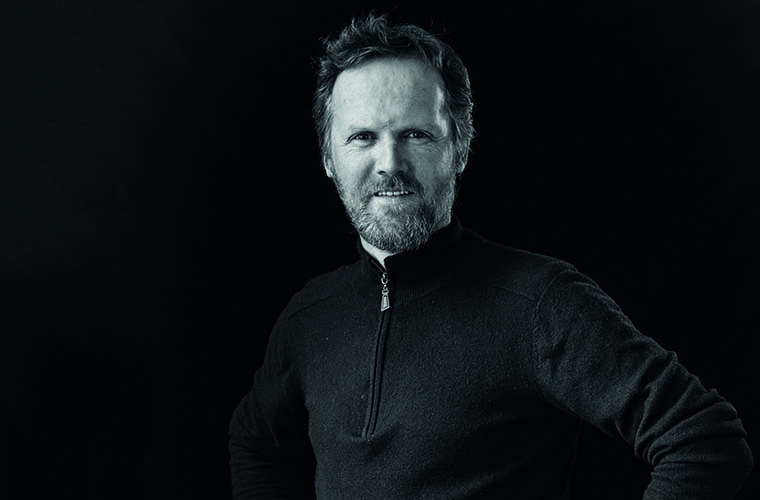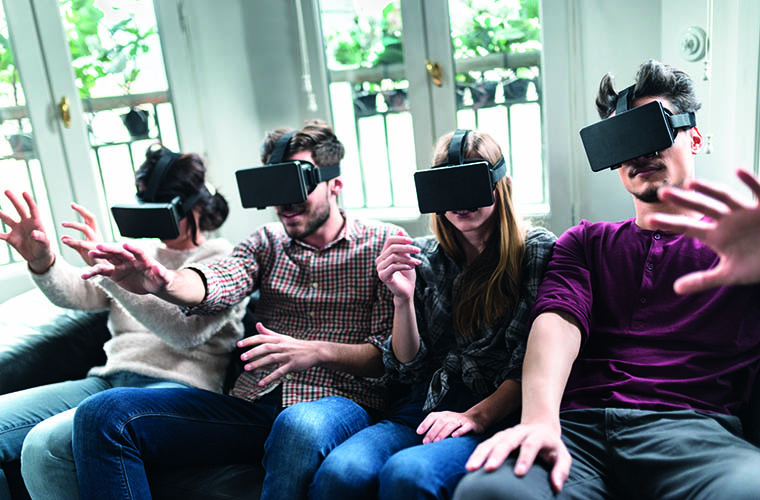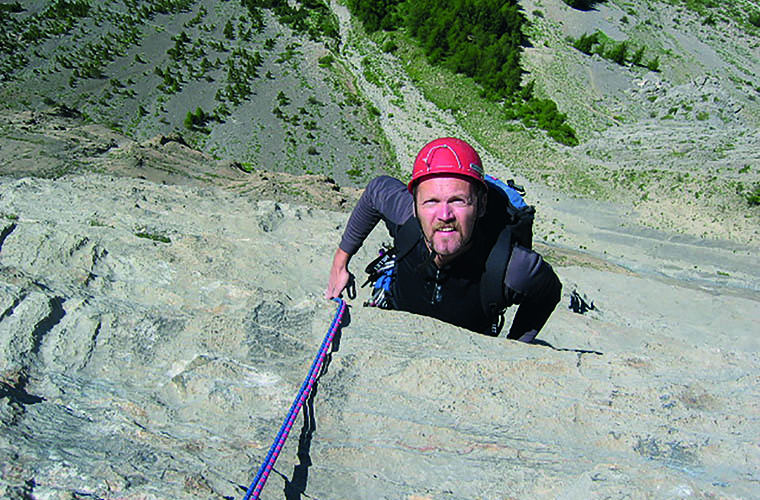Gaël Seydoux: “I believe we’re no longer a physical entity”

Gaël Seyoux leads the InterDigital Research and Innovation team responsible for immersive technologies. Here he talks to FEED about how to stay connected to the real world while a vast, confusing world grows around us
FEED: Can you start by telling us about your background?
Gaël Seydoux: I’ve been in the business for nearly 30 years. I started as a computer graphic artist, building images, then managing people building images, then producing games, then as a research director, building the technology. I’ve always been in the middle of technology, art and design. It’s the sweet spot.
I’m more on the technology side now. My team is responsible for developing immersive media technologies and innovations at InterDigital. We were part of Technicolor R&I until the unit was acquired by InterDigital last year.

Gogglebox: Goggles have to be updated, made more user friendly and less expensive before virtual reality can be mass-marketed
FEED: Your late has been building realistic human avatars that can be used for visual effects, but also “digital selves” for direct human communication. How do you see these technologies being used in the future?
Gaël Seydoux: I believe we’re no longer only a physical entity. We now have virtual selves. That’s the reason we developed this idea of creating a digital double, a 3D scan of yourself, which will be your digital avatar. I think the whole environment we’ve created, all these technologies that sustain these user experiences, have built up to allow the human being to think differently. We can imagine in the future you will have your real entity – yourself – and then a virtual you evolving in the virtual space which you need to be connected to.
It’s very important to me that when I climb, I’m not in the virtual world
FEED: Does this raise many legal and ethical questions about identity and ownership of data?
Gaël Seydoux: Yes, any virtual representation of yourself that you build needs to be owned by someone. Do you own it? Does the company that builds it for you own it? That’s the first part, the legal aspect of it. Then the second part is, you want that representation of yourself to be truly you and not controlled, derived or used differently by someone else. So you need to have a secure way to say that your representation is really you and not someone else taking control of it. It’s the same as your Facebook account – you don’t want someone to hack it.
FEED: What is doing to be like living more and more in a virtual world?
Gaël Seydoux: I’m a climber, so it’s very important to me that when I climb I’m not in the virtual world and that I’m really climbing on those cliffs.
I started climbing in Fontainebleau, south of Paris – it’s famous for its bouldering. I started at the age of five or six and have been climbing for nearly 50 years now. When you climb, you have to be very focused on what you’re doing. You have to feel the rock, you have to be aware of what’s happening and the track you choose. So I’m very grounded in the real world. But at the same time, I’ve been helping build virtual worlds for nearly 30 years. And I think it’s time to bridge the worlds together.

FEED: And how will that affect storytelling and content creation?
Gaël Seydoux: I’m very interested in mixed reality. I believe you no longer think in terms of worlds. Take for example the Game of Thrones franchise. It’s a world built on characters, assets, stories, landscapes, objects, fields, lots of things. And inside those worlds, they tell stories. It’s the same with gaming environments. I worked at Ubisoft for nearly nine years, and their popular game, Assassin’s Creed, is a world in which stories happen. So we no longer build stories, we build worlds and then stories. That’s essential.
As a parent you have to educate your children to be human beings in the real world
And just think, today those worlds can collide with our real world. In the future, I will be wearing my headset or goggles, I will be talking to a virtual version of you. But maybe it is a Game of Thrones asset or an Assassin’s Creed character looking back at me. And you have goggles too and are seeing my own character. Suddenly, there is a connection between the virtual and real worlds.
I think that’s the future of storytelling. It’s no longer going to a cinema to see a movie. It’s sitting down, wearing my goggles, and I could watch a movie, but then I have a slider where I can also bring you inside my story. Or I can then choose to interact with the characters, so it becomes more like a game. There is this slider that goes from real to virtual and also between narrative to interactive.
FEED: How do you think that would affect the creation process and the writing process?
Gaël Seydoux: I think writers will start by building a universe. If you look at Tolkien, he’s built a universe where there can be various different stories – The Hobbit story, the Lord of the Rings story, and there could be others. Star Wars also did this – and sometimes it can be annoying, because you have the feeling that you’ve visited that you’ve visited the world too much. You’re fed up with it and want to move to another world.
Another thing that’s essential is that creators build worlds that you want to be connected to all the time. You want to be on your smartphone, you want to be on your laptop, you want to be on your TV, and then the merchandising is a continuity of that in the real world.
The kids of this new generation don’t care if it’s virtual or real. One time I came home and my kid was playing League of Legends with his friend online after school. When he came to the dinner table later, he said: ‘I did this in the game and did this in the schoolyard’ and he was telling me this story about League of Legends assets in the real world and in the virtual world connected to his friends. All those worlds were mixing with him, half in the game and half in the schoolyard. That’s their reality.
FEED: So what needs to happen technologically to make that virtual reality work?
Gaël Seydoux: Now the problem is the form factor. Today, the goggles are firstly too expensive. Microsoft HoloLens is $3000, but it’s not mass market. And the form factor is very invasive – they’re heavy and you sweat. It’s the same for the virtual reality goggles.
We need to miniaturise and solve the problem of light guiding inside the goggles. In fact, we are working on a project now to create grating inside virtual reality glasses, where the light is guided using nanotechnology structure. I think if we can get to a device that is like a pair of glasses, that’s it. You would have your phone, watch headphones and then the goggles – and then you’re all set up.
FEED: Being a climber, you must have a very good sense of being in the concrete present. How does that prepare you to live in a virtual world?
Gaël Seydoux: I’ve always educated my children to play the piano, do sports, do fine arts, to be in the real world. At home, we don’t have a TV. We watch the films we want and we’re not polluted by the TV. My little six year old gets 20 minutes of TV time every three days. She takes that every time and I have to grab it back.
My kids have been raised this way, so they still are in the real world, but they are completely immersed in the virtual world. When I find it difficult to find something on the internet, they show me the way and it’s natural for them. Me, I’m 53 years old, so I struggle a bit.
That said, I think those two worlds are there. You can be something in the real world, you can be something in the virtual world. The new thing is that those two worlds collide all the time and they merge, they bridge. They are connected and they are close to each other. I think we are building technologies to bridge those two worlds.
The virtual world also allows for immense possibilities. If you look at Google Street View and Google Earth, they’re basically replicas, digital twins, of the world. Today you can use these applications to navigate almost everywhere on the planer. I remember being in a place in London five years ago and couldn’t remember the name of a shop. So I used Google Earth and went there virtually. I could see the front of the shop, I could read the name, I could get close and even see the schedule. I sent it to my son who was in London at the time of saying ‘go to that shop. It’s open today until five’.
FEED: Are there negative aspects to giving so much of our attention to the virtual world?
Gaël Seydoux: The other side is that a lot of younger people get attracted to this virtual world because the possibilities are immense and they can do whatever they want. They get hooked and they don’t leave it. You find young adults and even young children spending tens of hours a week on a game console or watching TV. So it’s a balance. As a parent, you have to educate your children to be human beings in the real world, as well as human beings in the virtual world.
They need to understand that there are rules to how it works, that everything you do on Facebook or Google is tracked so they can push content to you, to be aware that when you search something the ads that pop up are related to your search. So then you use maybe another web browser.
In the real world, I touch things, I feel things. Tomorrow I come back to a place, it’s still the same, but the virtual world is different. So you have to behave differently from the real world. And you have to educate your children to make them understand those differences and how they need to behave. Then they can get the best out of it, because they are aware of what’s happening.
Today, you can build an image of something that never existed. So our kids have to understand that they have to doubt what they see. In the real world, you hear people saying, ‘don’t believe everything you see or read’. But in the virtual world, it’s even worse; you have to be even more prepared to doubt and to judge differently.

Is this real life? As kids spend more and more time in the virtual world, Seydoux believes they have to be prepared to judge differently
FEED: So the virtual future is coming. Any final advice on entering this Brave New Virtual World?
Gaël Seydoux: The technology is evolving so fast. We’re faced with identity problems, with what we want to do on this Earth, and that question of what’s real, what’s not real and how do we deal with it? And AI is going to change all this even faster.
I think the best way is to be grounded in the real world first. Because that’s our envelope, that’s who we are, that’s our soul – although the soul is not that real-seeming either, you could say.
I was speaking to a colleague when I’d initially settled here in Rennes in France. I was telling her that in the morning, I had to wake up and scrub my windshield, because of the frost. She said, ‘Oh, you don’t park your car in your garage?’ And I replied, ‘No, I like to scrub the frost because that keeps me alive’. I can sense the freezing cold on my fingers. Maybe minutes before I was on my device, writing an email or searching or answering a question, and now I’m scrubbing my windshield. And that’s essential.
All day long I’m in the virtual world, dealing with technologies that we’re going to use in the future. When I get home, I like to light a fire or work in my garden, do tangible things – feel the earth, feel that I’m in a physical envelope.
Sometimes, I feel like I’m kind of schizophrenic, with part of my brain in the virtual world and part of my brain is in the real world. If part of my envelope is in the real world and part of my envelope is in the virtual world, where do I stand?
This article first appeared in the March 2020 issue of FEED magazine.









